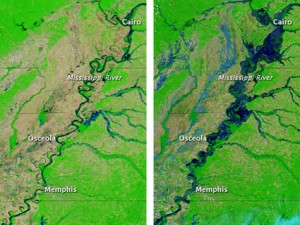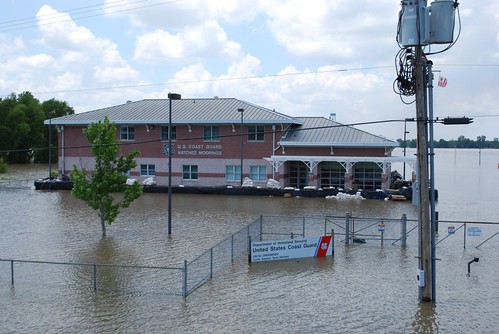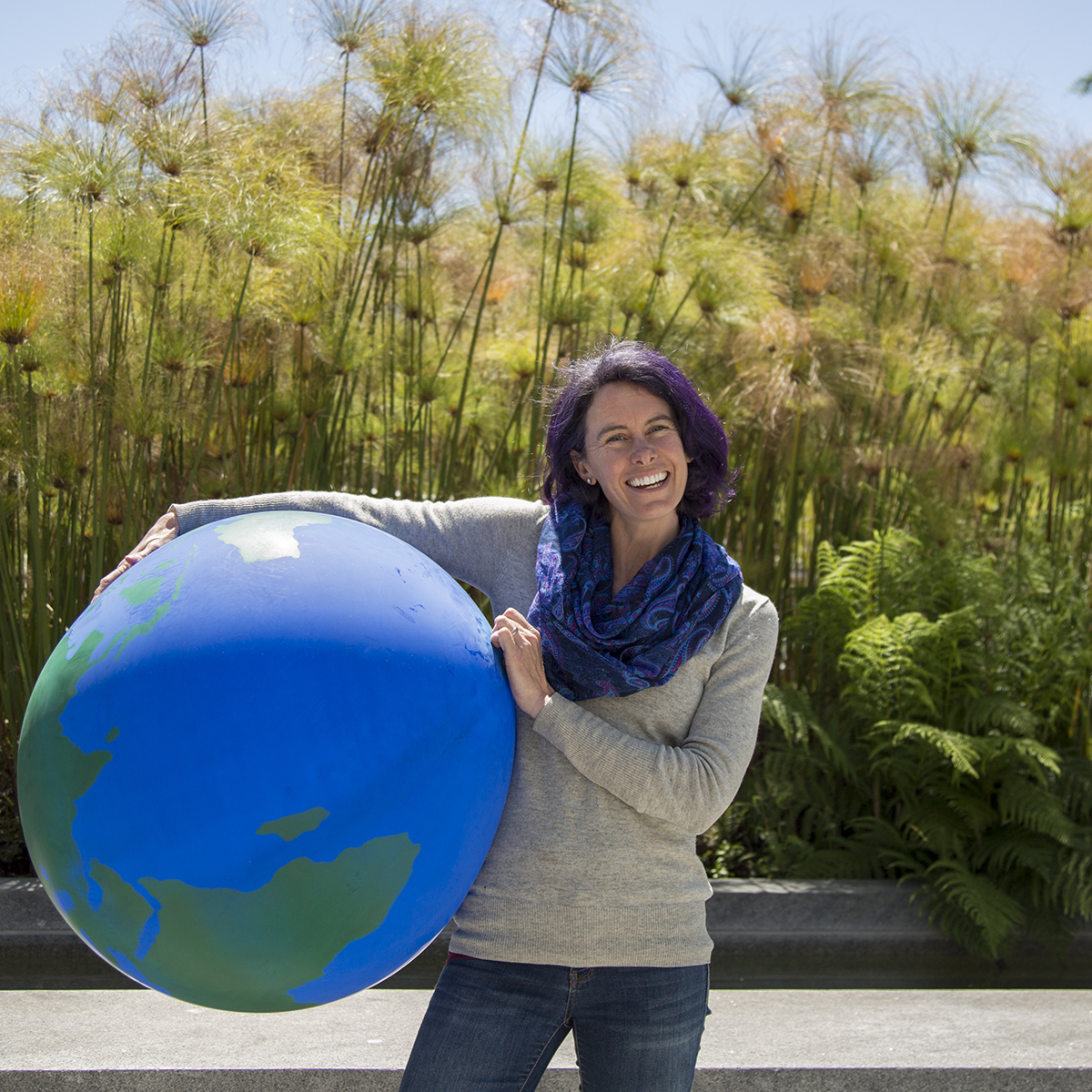Climate change’s role in the flooding of the Mississippi
Rebecca Anderson
|May 19, 2011

Mississippi floods before and after
It seems like there’s been a lot of crazy weather lately. Powerful tornadoes wreaking havoc across the Southeast, Texas in the worst drought in decades and now flooding along the Mississippi. 
Global warming, right?
Um, actually, maybe so.
It’s a standard first response whenever any climate scientist is asked if a particular weather event was caused by climate change: “You can’t say any one storm happened because of climate change.” And then they go on to talk about how climate change may have played a role, but that it’s hard to tell without a long-term context. But by that point, most listeners (including highly-distractible high school students) have moved on. You wasted your 10-second window of opportunity on the caveat as opposed to the main point:
Climate change was involved.
There’s no way it wasn’t. The world we live in is a world warmed-up and altered by greenhouse gases that we put in our atmosphere and that’s just the way it is. There is no control group. Every weather event we get is happening within the context of a climate-changed world.
As one scientist, Dr. Peter Gleick at the Pacific Institute, puts it, “We are loading the dice.” This has become one of my favorite ways to think and talk about the tricky relationship between weather and climate change.
*Note: After communicating with Peter Gleick, he credits the one and only Stephen Schneider are the originator of this phrase. Steve was a professor at Stanford University and the head of ACE’s Science Advisory Board among many other achievements. You can read more about his amazing life’s work here.
It might be tempting to take this approach to the extreme and blame climate change for everything from not paying your taxes to the Red Sox’s poor start to the season, but there is actually a physical explanation for how climate change loads the dice.
Greenhouse gases trap heat. Heat is one form of energy. That energy has to be used for something: warming the atmosphere is one thing but it can also go toward evaporating more moisture (warmer air holds more moisture) and raining it out again, intensifying storms.
To look at the most recent case of extreme weather, the flooding of the Mississippi, most of that water came from heavy April rains and lots of spring snowmelt in the upper Midwest. This exceptionally rainy spring fits the picture of bigger storms in a climate-changed world. Exactly how much of a role climate change played is tough to tease out, but this is actually something scientists are working on detecting.
The storms produced a bulge of water that traveled down the Mississippi, bringing water levels to at or near record-breaking highs. The Morganza Spillway, which diverts water from the Mississippi to the Atchafalya River, had to be opened for the first and only other time since 1973. This protected levees from breaking around Baton Rouge and New Orleans, but flooded thousands of acres of farmland and forced the evacuation of over 5000 people.

Check out this satellite photo comparing the Mississippi last year (right) to this year (left):
Clearly climate change isn’t the only factor influencing these floods. Other culprits include the layout of the Mississippi itself. This has been so altered by human activity by dredging out the channel and building levees to make it better suited for shipping that the river has become unnaturally deep and narrow and therefore more susceptible to flooding. Some groups, such as the advocacy group American Rivers, are arguing for the government to buy up low-lying, flood-prone land near the river or to contract farmland during flood season to create more options for where all this excess water can go. (And it’s a lot of water. On Tuesday, water was flowing through the Morganza Spillway at a greater rate than over Niagara Falls.)
So, what are the chances of this happening again in the future? Although many consider this to be a 100-year flood event, the Army Corps of Engineers, which puts out such statistics, has recognized that the baseline for defining a 100-year flood is changing because of climate change. As they update their predictions, it could mean that flooding like this year gets downgraded to a 10 or 30-year flood event. If that happens, I’m not looking forward to what the next real 100-year flood will look like.
Join our Youth Action Network
More Blog Posts

Our Climate Wins Were on Display at the State of the Union
Today, the Biden Administration temporarily halted all pending decisions on 17 Liquefied “Natural” Gas (LNG) projects across the Gulf South.
Read More
ACE Honored As An Anthem Awards Finalist
Action for the Climate Emergency (ACE) announced today that it won Bronze in Best Use of AI at the 3rd …
Read More
BREAKING: Biden Halts LNG Export Expansion
Today, the Biden Administration temporarily halted all pending decisions on 17 Liquefied “Natural” Gas (LNG) projects across the Gulf South.
Read More
